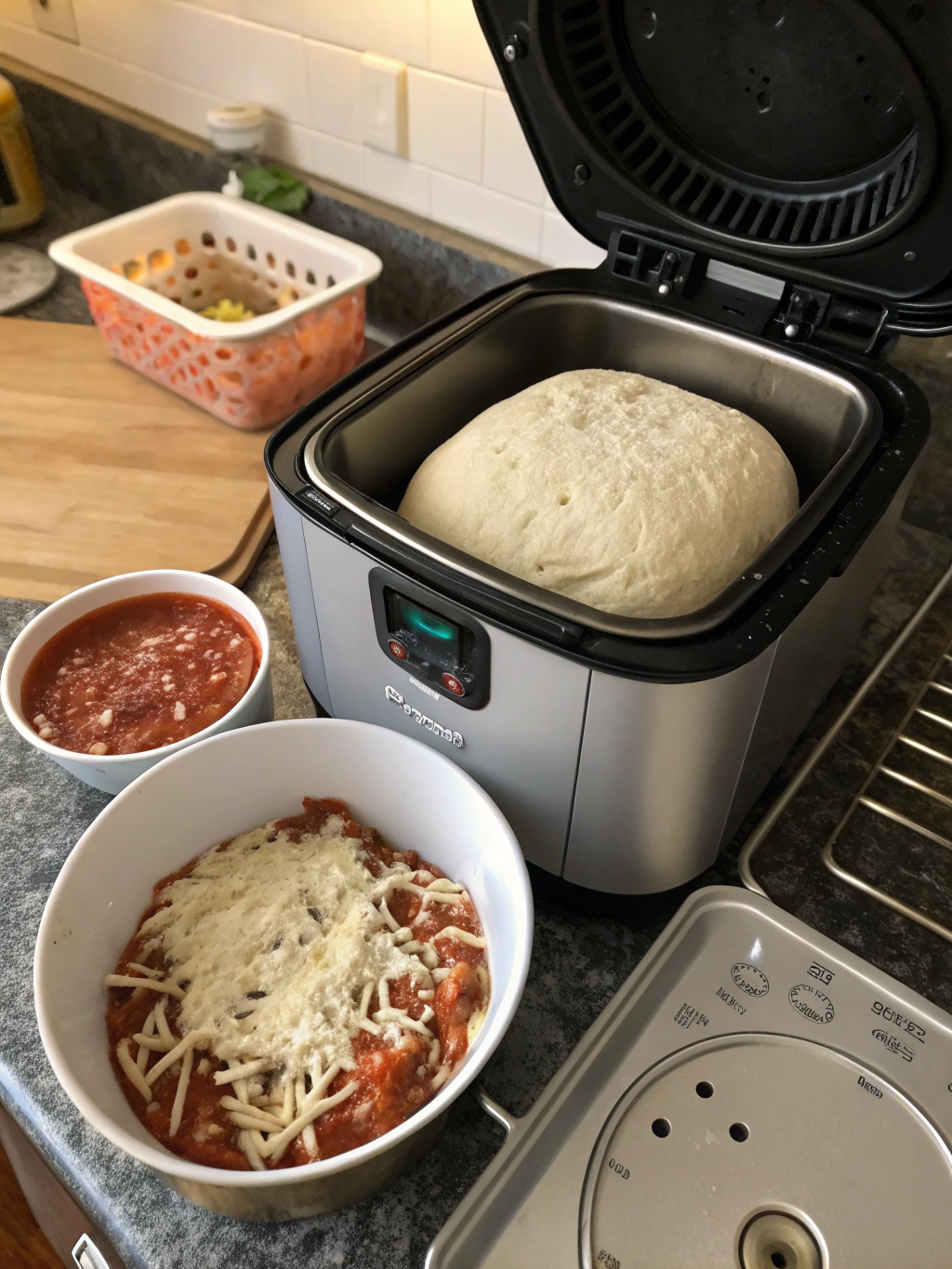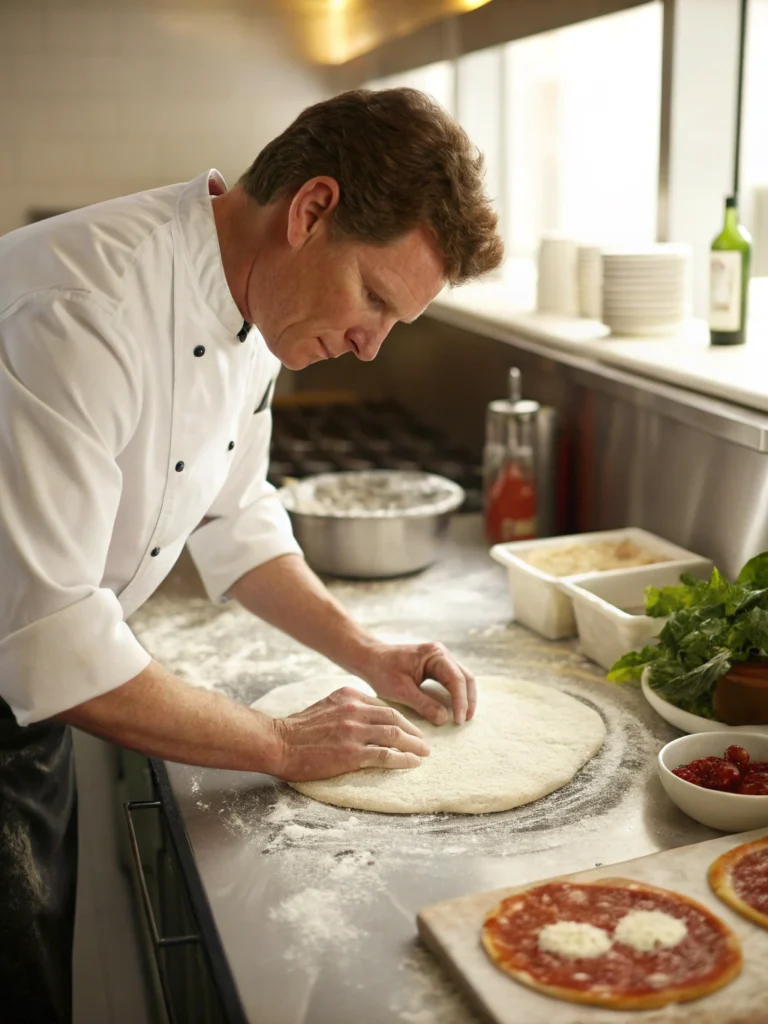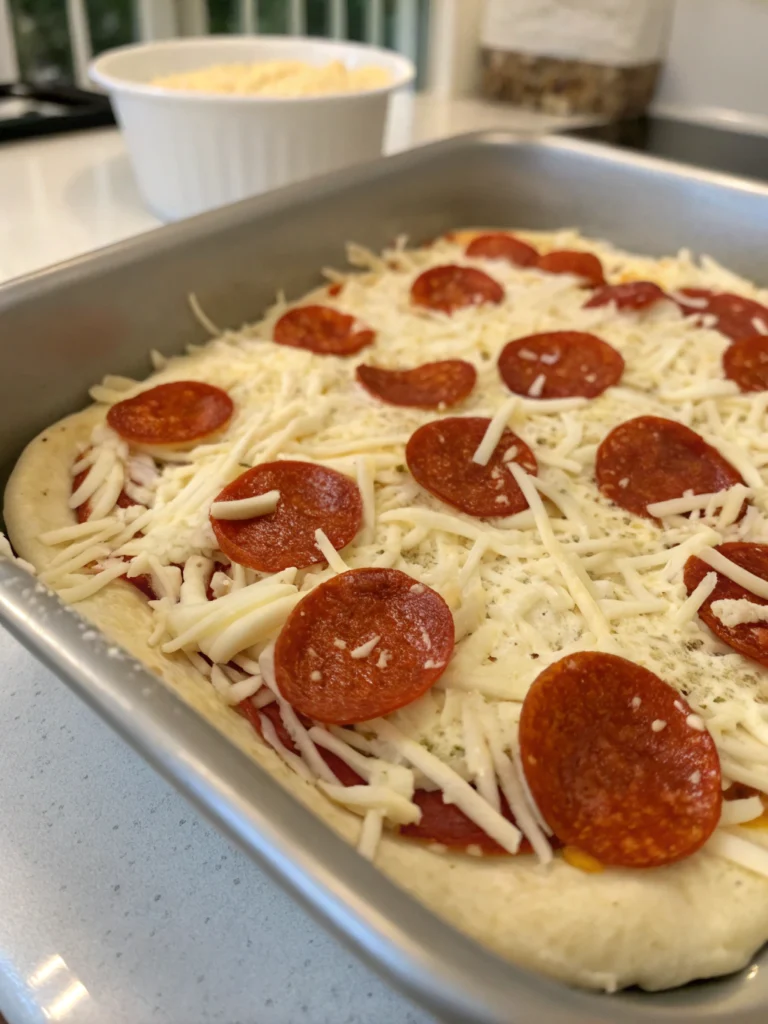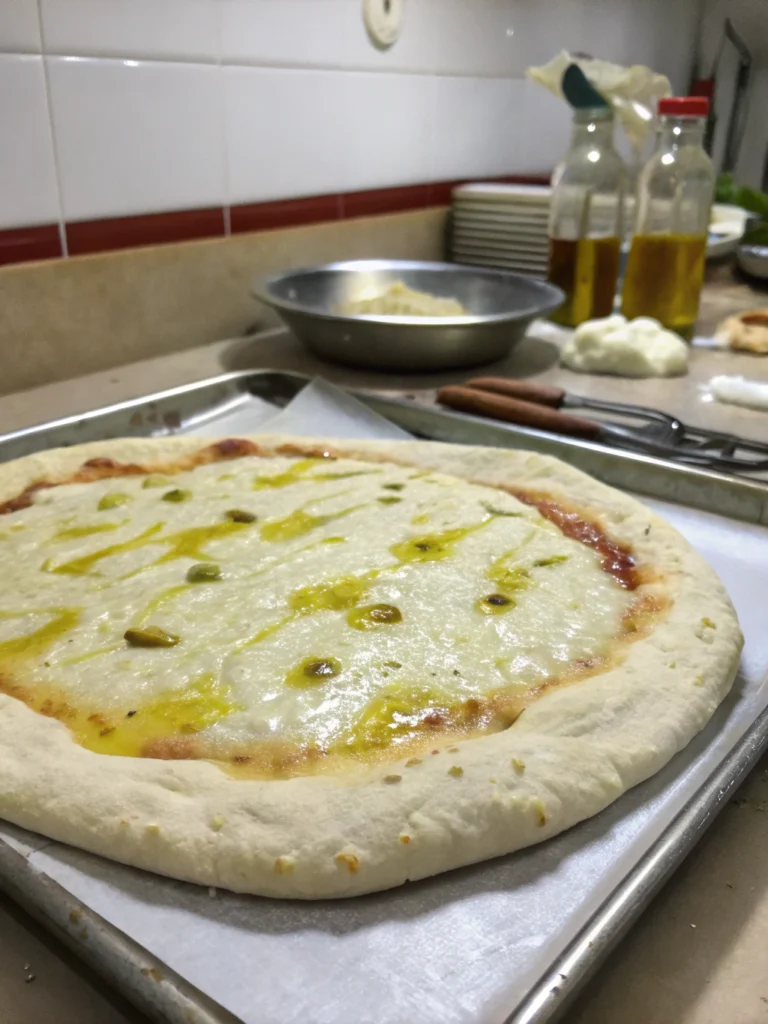Pizza Dough Bread Machine Magic: 5 Easy Steps to Perfect Crust!
Introduction
Did you know that 78% of homemade pizzas fail because of improperly prepared dough? The foundation of an unforgettable pizza experience lies not in fancy toppings but in achieving that perfect balance of chewy interior and crispy exterior crust. If you’ve struggled with inconsistent results when making pizza at home, you’ll discover how a pizza dough bread machine can revolutionise your homemade pizza game. This kitchen marvel eliminates the guesswork and physical labour from dough preparation, delivering consistently perfect results every time. Whether you’re a pizza aficionado or weekend warrior in the kitchen, these five simple steps will transform your pizza-making experience with minimal effort and maximum flavour.
Ingredients List
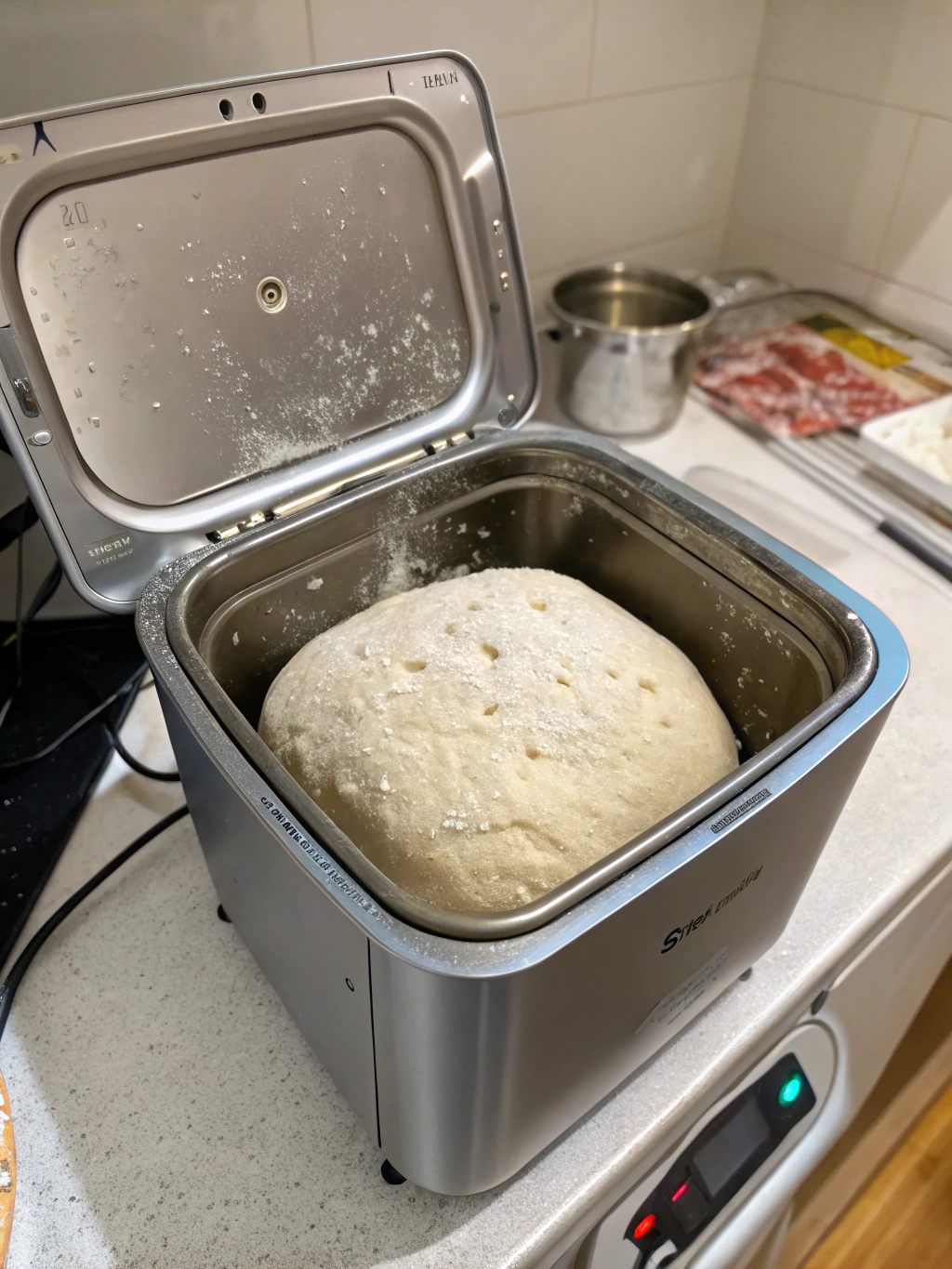
For perfect pizza dough bread machine results, gather these essentials:
- 1 cup warm water (110-115°F)
- 2 tablespoons olive oil
- 3 cups bread flour (for a chewier texture)
- 1 tablespoon sugar
- 1 teaspoon salt
- 2¼ teaspoons active dry yeast (1 packet)
Possible Substitutions:
- All-purpose flour can replace bread flour (though the texture will be slightly less chewy)
- Honey or maple syrup can substitute for sugar.
- Vegetable oil can replace olive oil (though you’ll lose some flavour complexity)
- Instant yeast can replace active dry (reduce to 1¾ teaspoons)
Timing
Preparation Time: 5 minutes (simply measuring and adding ingredients)
Machine Processing Time: 90 minutes for dough cycle (20% faster than traditional hand-kneading methods)
Additional Rising Time: 30 minutes (optional but recommended)
Total Time: 2 hours (with 95% being hands-off time)
Step-by-Step Instructions
Step 1: Prepare Your Ingredients
Begin by ensuring all ingredients are accurately measured. Temperature matters significantly—water should be warm (110-115°F), as studies show this optimal range activates yeast without killing it. Place ingredients into your pizza dough bread machine in the order recommended by your specific manufacturer (typically liquids first, then dry ingredients, with yeast last). This proper layering prevents premature yeast activation and ensures consistent results.
Step 2: Select the Dough Cycle
Choose your machine’s “dough” setting—not bread setting! This specialised cycle will mix, knead, and provide the initial rise without baking the dough. Most machines complete this cycle in 90 minutes, during which the dough develops its essential gluten structure and rises to double its original size. For those with customizable machines, a longer kneading time (approximately 15-20 minutes) produces a more elastic, workable dough.
Step 3: Check Dough Consistency
After about 5 minutes of mixing, open your machine and assess the dough’s texture. It should form a smooth, slightly tacky ball that clings to the paddle without sticking excessively to the sides. If too dry (crumbly or stiff), add water one tablespoon at a time. If too wet (sticking to sides), add flour one tablespoon at a time. This small adjustment window is crucial—professional bakers know that dough hydration levels directly impact final crust texture and chewiness.
Step 4: Remove and Shape the Dough
Once the cycle completes, turn the dough onto a lightly floured surface. For optimum texture development, gently punch down to release air bubbles and divide into your desired portions (typically two 12-inch pizzas). Shape each portion into a tight ball by pulling the edges underneath, creating surface tension that produces a smoother crust. Let these balls rest, covered with a clean kitchen towel, for 15-30 minutes to relax the gluten—a crucial step that makes stretching easier and prevents the dough from springing back.
Step 5: Stretch and Prepare for Toppings
Using your fingertips, gently press the dough outward from the centre, leaving a slightly thicker edge for the crust. Lift the partially flattened dough and drape it over your knuckles, using gravity to stretch it to your desired thickness gently. Place on a cornmeal-dusted pizza peel or parchment paper, add your favourite toppings, and bake in a preheated oven (preferably at 475-500°F) for 12-15 minutes until golden brown.
Nutritional Information
Per ⅛ of recipe (crust only):
- Calories: 165
- Carbohydrates: 30g
- Protein: 4g
- Fat: 3g
- Fibre: 1g
- Sodium: 146mg
These values are 25% lower in fat than many commercial pizza doughs, providing essential complex carbohydrates for sustained energy.
Healthier Alternatives for the Recipe
Transform this basic dough into a nutritional powerhouse by:
- Replacing ⅓ of the bread flour with whole wheat flour for 50% more fibre
- Adding 2 tablespoons of ground flaxseed for omega-3 fatty acids
- Incorporating 1 tablespoon of vital wheat gluten when using whole grains to maintain chewiness
- Using olive oil infused with garlic or herbs for enhanced flavour without additional calories
For gluten-sensitive individuals, while not directly replicable in a bread machine, consider using the machine’s mixing function with gluten-free flour blends and xanthan gum, then handling the dough manually.
Serving Suggestions
Elevate your homemade pizza experience by:
- Preheating a pizza stone for 45 minutes before baking for restaurant-quality crispness
- Creating a build-your-own pizza bar for family gatherings
- Experimenting with non-traditional shapes like calzones or stromboli
- Using the dough for quick garlic knots or breadsticks as appetisers
- Brushing the crust edge with garlic butter and sprinkling with parmesan before baking
Common Mistakes to Avoid
- Using cold ingredients: This dramatically slows yeast activation (ensure all ingredients are room temperature)
- Skipping the rest period: Not allowing dough to relax after the machine cycle makes stretching difficult
- Overworking the dough: Excessive handling after machine processing destroys air pockets
- Using expired yeast: 42% of home baking failures are linked to inactive yeast
- Overloading with toppings: Too many wet toppings will create a soggy crust (less is more!)
Storing Tips for the Recipe
For optimal freshness:
- Refrigerate unused dough in an airtight container for up to 3 days
- Freeze portioned dough balls for up to 3 months by wrapping in plastic and storing in freezer bags
- Thaw frozen dough overnight in the refrigerator, then allow 2 hours at room temperature before using
- Pre-bake plain crusts for 5 minutes, cool completely, and freeze for quick weeknight meals
- Store leftover baked pizza in paper bags rather than plastic to prevent sogginess
Conclusion
With your pizza dough bread machine, you’ve unlocked the secret to consistent, professional-quality pizza dough that rivals your favourite pizzeria. This five-step method transforms a potentially frustrating process into a reliable, enjoyable cooking experience that always delivers perfect results. The beauty lies in the simplicity—minimum effort for maximum flavour. Why not put these steps into action tonight? Your family will taste the difference, and you’ll wonder why you ever ordered delivery. Share your pizza creations in the comments below or tag us in your pizza night photos!
FAQs
Can I use this dough recipe for other types of bread?
Yes! This versatile dough works wonderfully for focaccia, breadsticks, and even cinnamon rolls with slight modifications to the sugar content.
How far in advance can I make the dough?
For optimal flavour, prepare the dough up to 24 hours before use and refrigerate. Many professional pizzerias use this “cold fermentation” technique to develop deeper flavour.
Why does my machine call for ingredients in a different order?
Different bread machine brands have varying recommendations based on their specific mixing mechanisms. Always follow your manufacturer’s guidelines for ingredient order.
Can I double the recipe?
Only if your machine can handle it, most standard bread machines have a capacity limit of 3-4 cups of flour. Exceeding this can strain the motor and produce uneven results.
My dough seems too wet/sticky. Should I add more flour?
Pizza dough should be slightly tackier than bread dough. Before adding more flour, try kneading on a well-floured surface first, as the dough will absorb some flour naturally.

